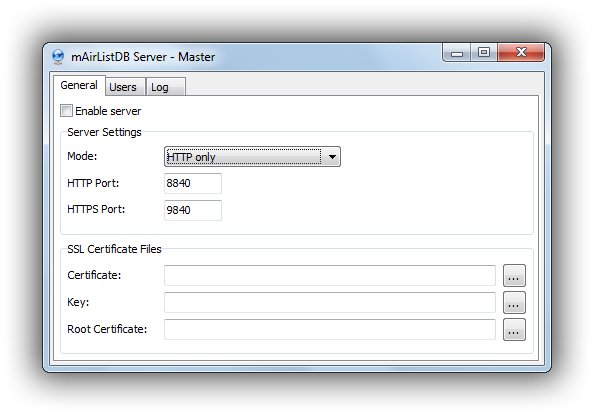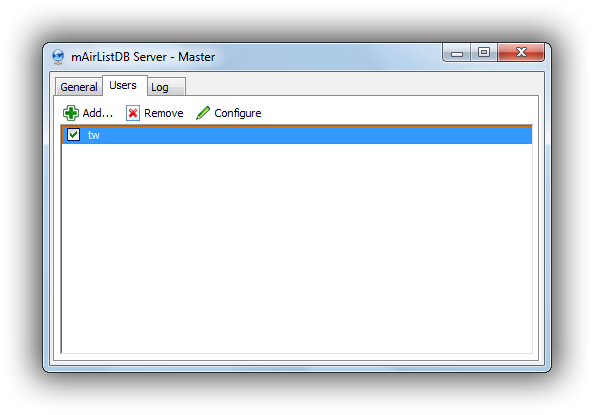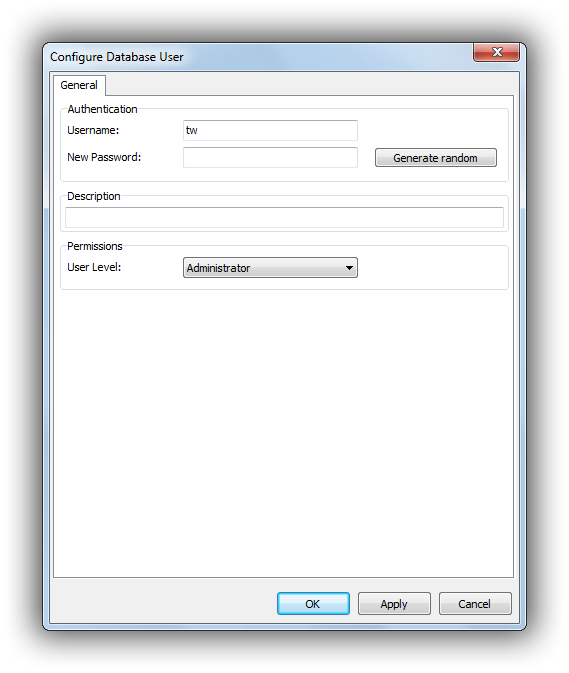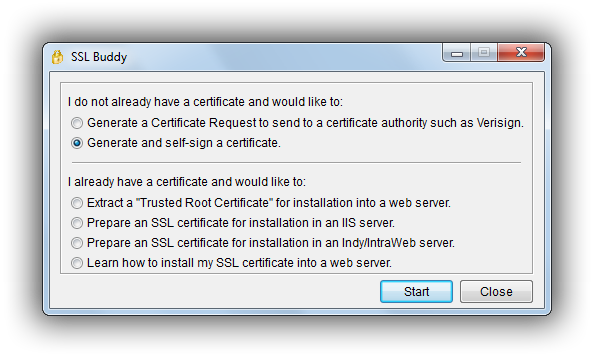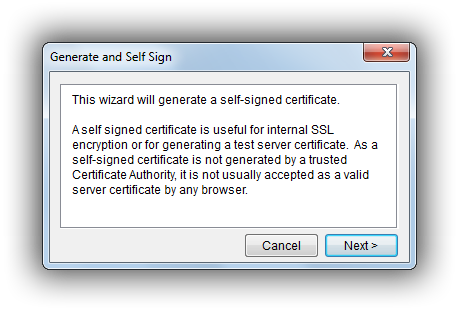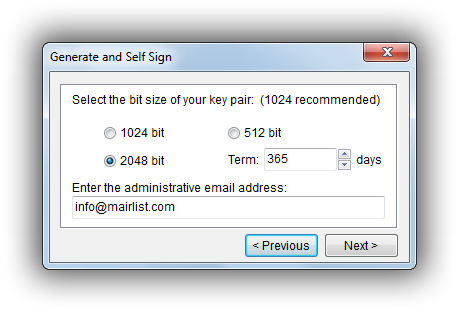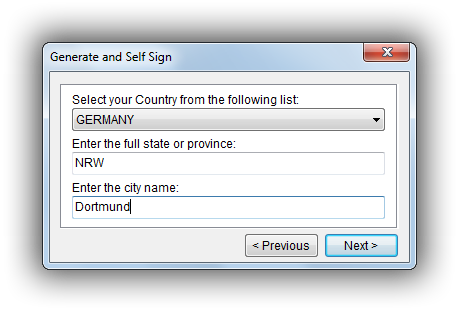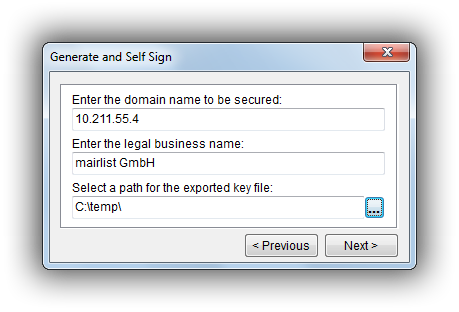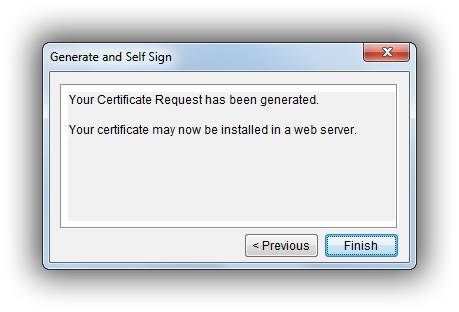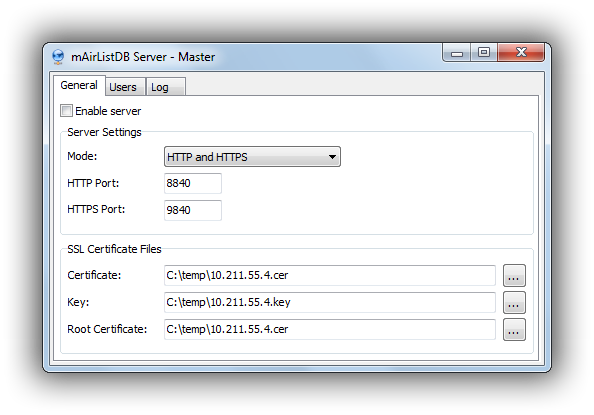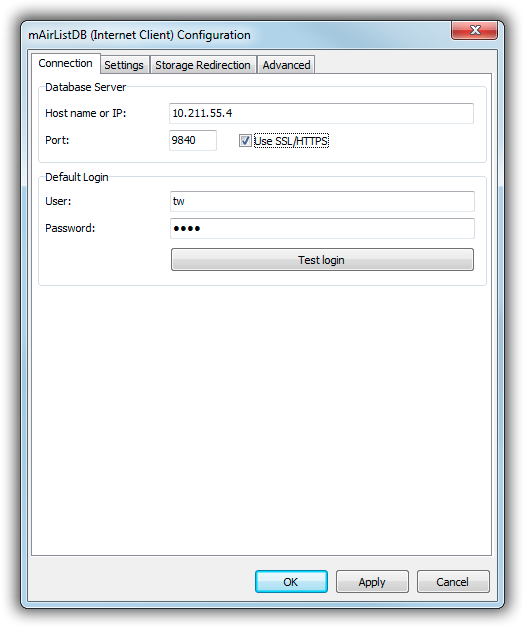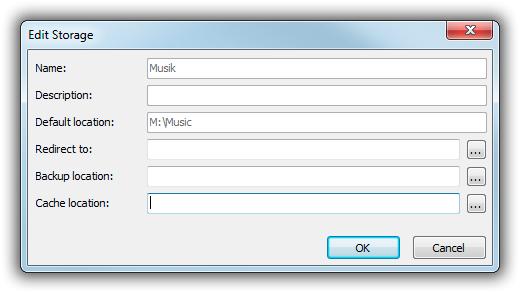Table of Contents
mAirListDB Server
mAirListDB Server is an application that allows you to share a mAirListDB over the public Internet.
Background
A networked mAirListDB setup involves two types of servers:
- An SQL server (PostgreSQL, MSSQL, MySQL) to hold the metadata for the audio files and scheduling information (library, playlists)
- One or more network drives where the actual audio files are located
This works very well for situations where all computers are within the same LAN and can access both the SQL server and the network shares.
Accessing the mAirListDB from outside the LAN, i.e. from the Internet, is very difficult though. In particular, access to the network shares is almost impossible from outside a NAT router without setting up a VPN.
This is where mAirListDB Server comes into play. It encapsulates the access to the SQL server and the audio files through a single TCP connection that can be shared through any NAT-enabled router.
How it works
mAirListDB Server is built into mAirList.exe but runs as a standalone process. It creates a HTTP/HTTPS server (on one or two TCP ports) that listens for incoming requests from clients. The TCP ports can easily be forwarded on your NAT router so that road-warrior type clients can connect from anywhere on the Internet.
The HTTP server is not intended for use with a web browser, but instead, the client computer must have a compatible copy of mAirList installed, and set up a “mAirListDB (Internet Client)” connection accordingly. Thereafter, the client user can run the mAirListDB application to connect to the mAirListDB server and work with the database as usual.
Most functions of mAirListDB can be used with such a mAirListDB Server connection, including:
- Library editing
- Playlist editing
- Scheduling
- Pre-listening and on-air playback of audio files
- File upload
- Voice tracking
A couple of things are not available when connecting through mAirListDB Server:
- Storage synchronization (needs direct access to the storage network share)
- Database cloning (needs direct access to the SQL server)
On the client side, you can not only use the mAirListDB application to work with the database, but you can also access the database from the mAirList playout application. When you load a playlist or drag a file from the DB library into the playout window, it will be downloaded from the mAirListDB server, stored in a temporary file on your hard drive, and automatically deleted after playback. (Please keep in mind that there may be delays depending on the Internet connection speed between the server and the client.)
Use cases
mAirListDB server extends the range of your networked mAirListDB intallation to outside your LAN.
Remote studios
If you have more than one studio location, and the remote studios cannot access the LAN of the primary location, mAirListDB server can be used to connect those studios to the main audio and scheduling library. If you have a lot of accesses to audio files, it is recommended that you keep a sync'd copy of all audio files on a local server at each location (e.g. using rsync), and use mAirListDB storage redirection to point the client to that copy. This will speed up access to the audio files significantly.
Road-warrior DJs
Some stations have DJs who do library editing and scheduling tasks from their home, or wherever they are. With mAirListDB server, you can give these people access to the database from any location. It is even possible to do voice tracking from the remote location, and upload the files to the mAirListDB server instantly.
Internet radio
In a typical internet radio scenario with multiple DJs who all work and broadcast from their home, mAirListDB Server can be used to set up a common audio library that can be shared by all DJs. In particular, the owners of the radio can share a music library with their DJs giving them acccess to the actual files, or even giving them a copy of the entire library (both of which would be a legal issue in most countries).
Setting up mAirListDB Server
Prerequisites
To run mAirListDB Server, you need the following:
- A working mAirListDB connection. The database must be set up properly in the mAirList configuration. Ensure that everything is working fine when using the mAirListDB app on the server computer.
- A compatible license. Currently mAirListDB Server is included in mAirList Professional Studio. (Please contact us if you need the server as a standalone license.)
- Server and client must be (roughly) the same version; it is not possible to mix a mAirList 5.x server with a mAirList 6.x client, for instance.
mAirListDB Server is built into the main executable (mAirList.exe) and is part of any mAirList installation.
Running mAirListDB Server for the first time
You will find the Database Server app in the mAirList group in the Windows Start Menu. Alternatively, if you're running the Zip distribution of mAirList, you can start mAirListDB Server using the batch file DBServer.bat inside the program folder.
When you run the application, the main window will appear:
Before you enable the server, you should check the TCP ports that are used for HTTP and HTTPS. The default ports are 8840 (HTTP) and 9840 (HTTPS). It may be necessary to open these ports in your firewall before client computers can access them. (If you use the Windows built-in firewall, you will be prompted to grant access when you click Enable server for the first time.)
Adding Users
Before a client can connect to the server, you must add user to the account database. Go to the Users tab to see the current user list (should be empty at this point):
Then click Add to add a new user:
The user must have a name and a password. You can either type a password or have mAirList generate a random password for you.
The available User Levels correspond to the security roles used by mAirListDB:
- Read-only
- Studio (Read-only + write access to playlist history table)
- DJ (Studio + create/edit playlists)
- VT DJ (DJ + uploading voicetracks to the database)
- Folder Manager (DJ + move items between folders in Library)
- Manager (Folder Manager + full Library editing)
- Administrator (Manager + full configuration rights)
Using HTTPS/SSL
mAirListDB Server supports SSL encrypted connections over HTTPS. We recommend to enable the HTTPS server and only use encrypted connections when accessing the server from the Internet. The HTTPS server runs on a different port (default: 9840) than the unencrypted HTTP server.
mAirListDB Server needs a set of SSL certificate files to work:
- A certificate file (the public part of the certificate)
- A key file (the secret part of the certificate)
- A root certificate (the certificate of the authority that issued our certificate)
You can either obtain a “real”, paid certificate from a commercial certification authority (CA), or you can create a free self-signed certificate. See below for instructions on how to create a self-signed certificate with SSL Buddy. The client side of mAirList does not verify the certificate chain currently, so a self-signed certificate will work fine as long as you only use mAirList on the client side.
All certificates must be in PEM format. The file extension depends on the software that was used to create the certificate and key: *.pem, *.cer, *.key, …
Self-signed certificate with SSL Buddy
SSL Buddy is a Windows tool that lets you easily create self-signed certificates. You can download it here: http://www.atozed.com/intraweb/blog/20100413.EN.aspx
Edit 2015-03-31: Original download link for SSL Buddy seems to be dead at the moment - here's an alternative link: http://download.mairlist.com/other/sslbuddysetup.exe
After the installation, run SSL Buddy and follow these steps to create a certificate for your mAirListDB server. (See screenshots below for a visual walkthrough.)
- Run SSLBuddy, select Generate and self-sign a certificate, then click Start.
- A wizard will appear, click Next.
- Select 1024 or 2048 bit key size, and enter your e-mail address, then click Next.
- Enter you country, state and city, then click Next.
- Enter the domain name - this should match the public IP or FQDN hostname under which the clients will access the server later. Also enter your business name (or your personal name) and the directory in which the key and certificate should be saved. Then click Next.
- A message will appear saying that the certificate has been created. You will find the certificate (
domainname.cer) and the key file (domainname.key) in the output directory you specified.
You can now enter the certificate and key file in the mAirListDB Server configuration. Note: As this is a self-signed certificate, we use the certificate (*.der) file as both the certificate and the root certificate.
Setting up the mAirListDB Client computer
Connection setup
On the client computer, follow these steps to add a connection to the mAirListDB Server:
- Open mAirList Configuration.
- Go to Databases.
- Click Add, then select mAirListDB (Internet Client).
- In the dialog that appears, enter hostname, port, SSL or not, user and password. Note: In more recent versions of mAirList, a randomized one-time token is used for authentication to the server. In order to generate the token, click Sign In, enter user name and password, and a token will be requested from the server and entered into the input field.
- Click OK to save.
Now you can run the mAirListDB app, or use the database connection from within the playout window.
Audio file caching (optional)
Sometimes it's a good idea to keep a synchronized copy of all of your audio files on the client computer, especially when broadcasting from a location with a slow internet connection.
If you have such a synchronized copy of any audio storage folder, you can go to the Storages section of the database connection dialog, edit the particular storage and set the Cache folder to the folder where the synchronized copy is located:
Now when mAirList needs an audio file for playback, it will first check if it's in the cache folder, and only if it's not, the file will be transferred via HTTP. This will save a lot of bandwith.
